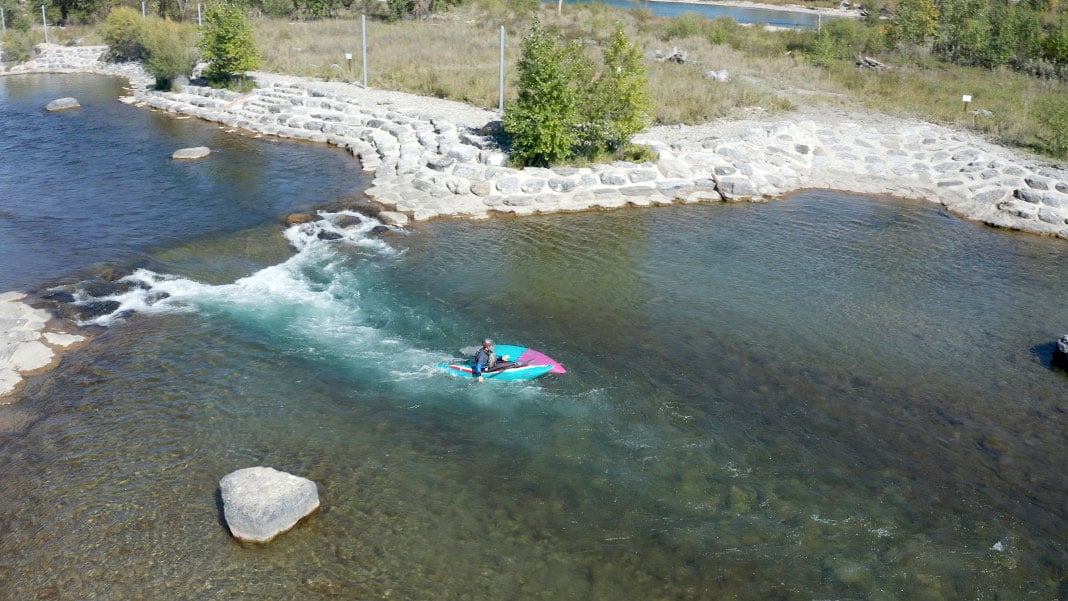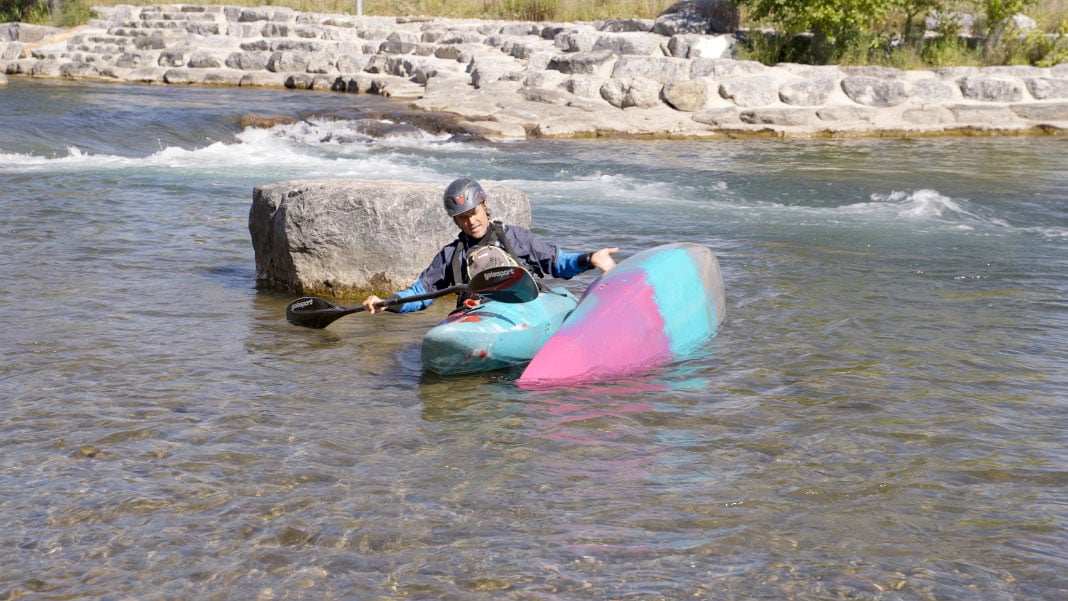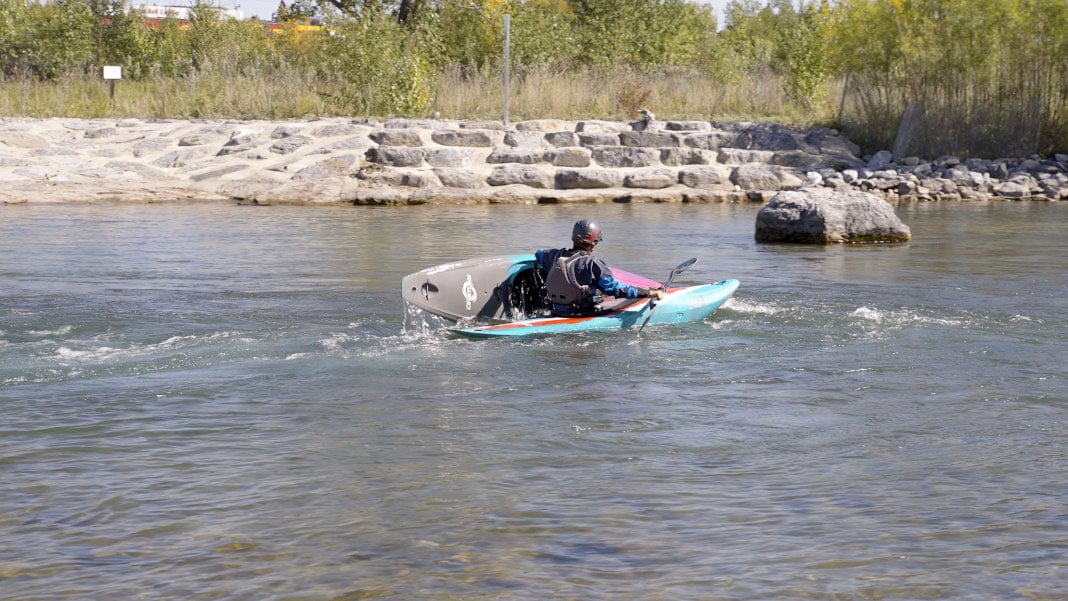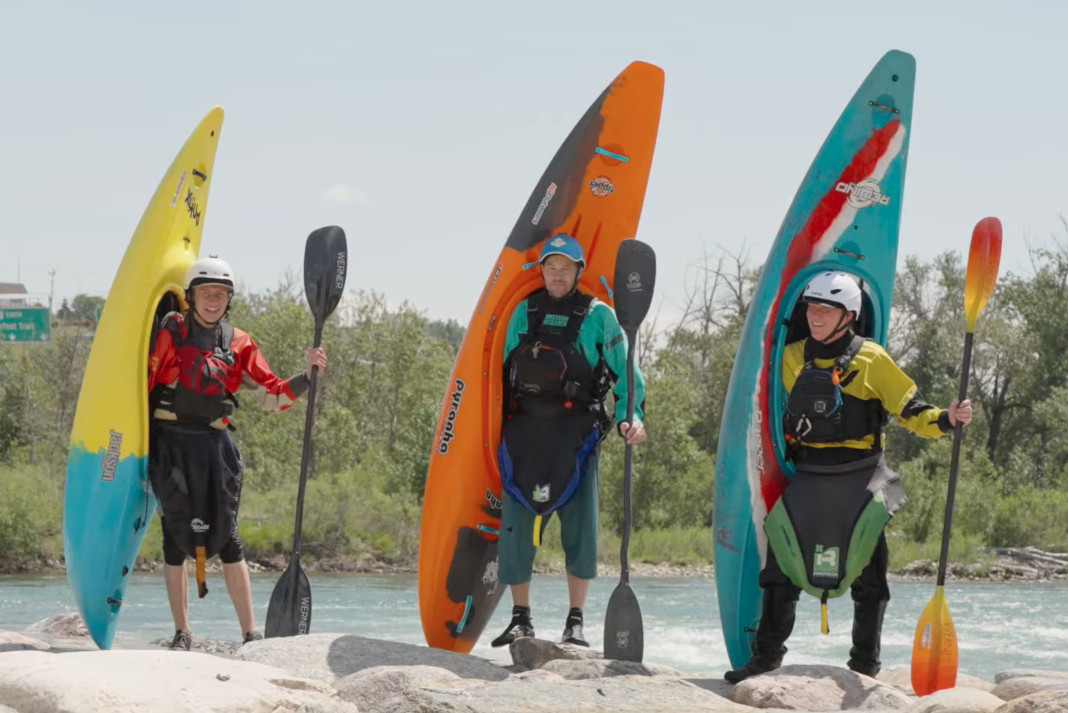Everybody swims—it’s part of the sport, and whitewater kayaking is more of a team activity than we may credit it for. You want to strive to be a strong teammate on the river and know others have your back too. Among essential rescue techniques is the ability to wrangle a friend’s boat, and here to help is Simon Coward, owner of AQ Outdoors (AQ Outdoors is a paddling shop and school with locations in Calgary and Edmonton). The following is a transcript of Coward’s kayak rescue method of choice.

How to perform an effective kayak rescue in whitewater
Simon here from AQ Outdoors, just checking in with a little tutorial on some best practices and the easiest ways to rescue kayaks. Over the last 20-odd years of teaching and such I’ve made lots of mistakes, I’ve learned from others, and I’ve seen others make mistakes, and some do really great rescues.
Basics of rescuing a kayak
This is very much about how to keep it as simple as possible. We’re going to start in flatwater how we might address this. My personal preference is to not clip the boat and to get the boat upright as soon as possible. If I get the boat upright and it has float bags in it, it’s much easier to manipulate—whether you’re clipping it, pushing it or bumping it. Ideally we want the boat upright and empty. It’s very easy to rescue at that point but you don’t always get that good of a bounce, well we usually don’t because people are usually upside down.
After someone swims, the boat is going to be upside down and have a bit of water in it, right, so with this, the most common way I see people try and right the boat is essentially to lean across, grab the gunnel on the other side, push down with this hand and right the kayak. And that works, however, once you get into moving water and it’s a bit more dynamic, that becomes a lot harder. Especially with larger boats and smaller people, it becomes very difficult.

A straightforward rescue technique
My preferred way of righting the boat if it is upside down, is just essentially to get alongside it, grab the inside gunnel, and slowly start to right it. Then, I lean away and push away. This way I actually have contact with my paddle the whole time—I don’t have to let go of it. And, it’s very quick and very easy to get the boat back upright again. Now we have a kayak, presuming there are float bags in the back, that’s very easy to push and manipulate and move around. It’s not always going to cooperate, sometimes it’s going to flip back over again.
So, super simple: get alongside it, grab, lean away, push the gunnel away, the boat’s right again and you’re off to the races.

Rescuing a kayak in whitewater
Okay so I’m presuming I’m running safety at the bottom of this little drop. We’ve got our swimmer out, and this boat’s coming down. The first thing to think about is timing. When am I going to go out and get myself to the boat? I pop out [of the eddy] and I get alongside it. Now I’m going to grab the inside of the kayak and then push. I can spin it [the direction I want it to go] then I push the boat [toward shore]. It’s going to spin. It almost flipped there but there’s not that much water in it so it stayed upright.
I haven’t had to clip the boat at all. So if there were any hazards I’m not at risk of flipping over and getting hung up. Basically I’ve got the boat to shore very quickly, very simply. Now I can get out, and I can empty the water out off the kayak and we can get the paddler back going again.
That’s it, a quick and simple way to rescue a whitewater kayak that doesn’t have a rider anymore. Obviously, it’s ideal that there are float bags in the back, but this method doesn’t require you to let go of your paddle. It doesn’t require you to clip onto the boat. It’s a quick flip push get it into the eddy and you’re off to the races.
AQ Outdoors offers retail and kayak instruction in Calgary and Edmonton. Learn more about their school and stores at AQOutdoors.com.
Simon Coward’s chosen method of righting a kayak. | Feature image: AQ Outdoors





